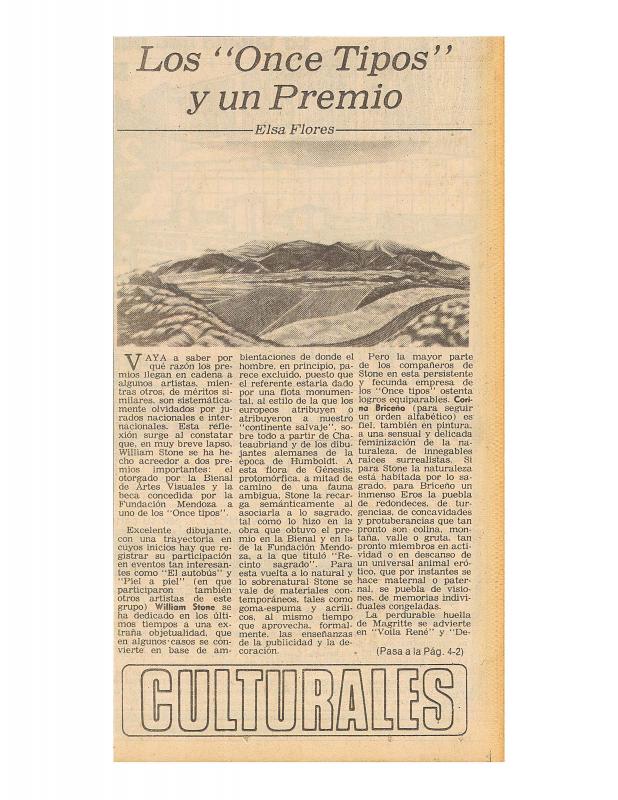Roberto Montero Castro (1945–2005) reviews the fourth exhibition (1977) in the series of six bearing the colloquial name Once Tipos at the Sala Mendoza in Caracas (1973, 1975, 1976, 1977, 1979, and 1981). The first event in the series was organized in 1973 by the curator and critic Lourdes Blanco who was, at the time, the director of the Sala Mendoza. When she retired in 1976, the painter Margot Römer took her place. Referring to the first of those exhibitions in his book Once Tipos (Caracas: Academia de la Historia, 2002), the historian Juan Carlos Palenzuela noted that “Not many people realized that, at that precise moment, a new chapter was starting for art in Venezuela.”
Montero Castro claims that the evolution of Venezuelan art was interrupted in 1950, and he has a somewhat negative opinion of the local art produced from 1950 to 1974. For example, he believes that by the early 1970s, Venezuelan artists had demonstrated the sterility of geometrical abstraction, the limitations of Pop Art, and the failure of the political art of the 1960s. That is why, according to Montero Castro, they focused their efforts on “new media.” What are very important are his comments concerning their wish to go back and pick up where that evolution was interrupted, a goal he could see in the works exhibited by some of the participants in Once Tipos de 1977. Montero Castro thinks that we can finally talk about the emergence of a new generation to relieve the previous one.
This review also explains the importance of landscape painting in Venezuela’s collective sense of place, represented at this exhibition by works that (like those by José Antonio Quintero, for example) portray El Ávila, the iconic mountain near Caracas that became the defining subject for the Venezuelan landscape school in the early twentieth century.
To read the review of the Once Tipos exhibition written by the Argentinean critic Elsa Flores, see “Los ‘Once Tipos’ y un premio” [doc. no. 1059513].

